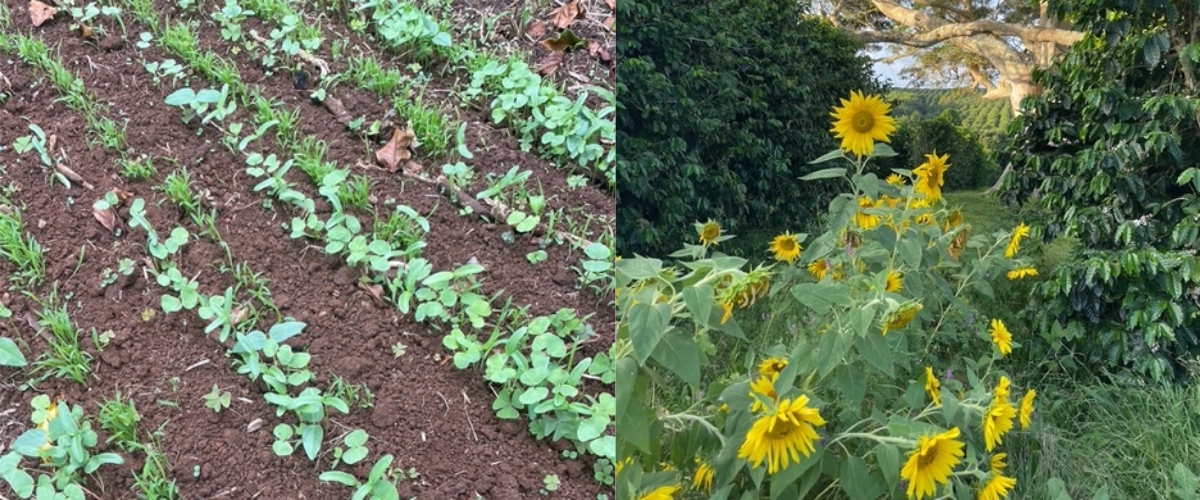
CoverCrop Activity – Summer 2023
We’re Growing Covercrops for soil health and pollinators. That they bring life and joy is a bonus!
Rebecca Zentveld here, writing without the use of any AI text generators. Honestly a blog is meant to be personal, I reckon! So, here’s to Covercrops!
First up : the why and what for …
Covercrops planted throughout the year brings many benefits. The extra diversity of plants (along with our coffee trees and grasses and perennial covers) allow for a wider nutrient transfer along the ‘mycorrhizal highway’. Roots feed microbes – they attract the microbes they want (yes they have preferences) and now we understand that they actually eat microbes to gain the nutrients they need. (That’s good, crazy.) They then transfer the nutrients back through the soil to make available to nearby plants – a’la our coffee trees. Thankyou covercrops & microbes : partners in nutrient transfer and good soil health. Providing a solid base for the lasting health of our coffee trees, naturally. No chemical fertilisers on our farm! Covercrops add biomass -real soil cover, with all the good cooling and moisture holding benefits. Smaller, more shade loving plants such as clover and the softer native grasses pop up underneath the shade provided by the faster growing plants such as buckwheat, radish or any of the pea family. The extra root structures keep the earth in place, helping prevent soil losses from wind or erosion from say, mega downpours, which we get over summer. That’s just a few of the benefits!
Letting the plants go to flower and on to seed, the cover crop rows become a natural insectary. Bringing a whole extra dimension of biological benefits, bees, bugs and joy!
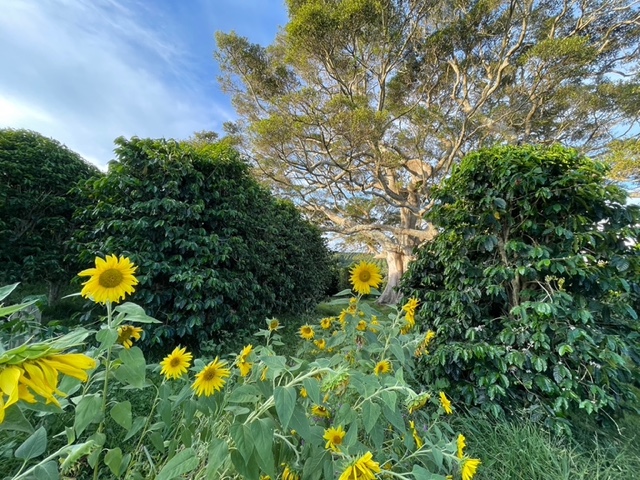
The Spring plantings of September 2022, came into full bloom after 3 months – showing off their flowery splendour and bringing summer delight to We on the farm and our visitors over the holiday period.
Of course the most welcome visitors of all were the Pollinators and Insectory friends who deserve Capital Letters, such as their importance to life on Earth.
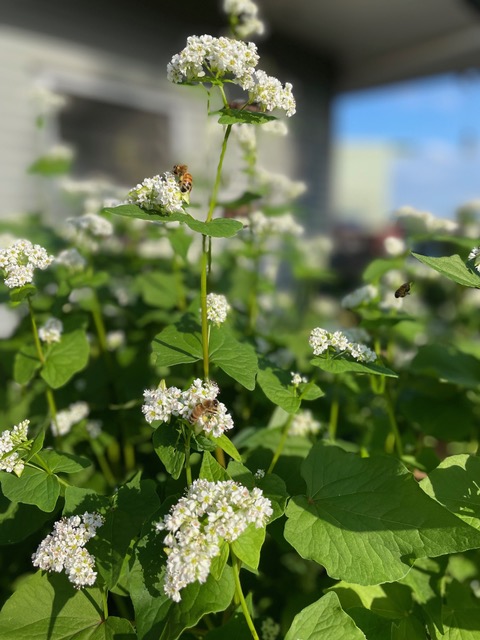
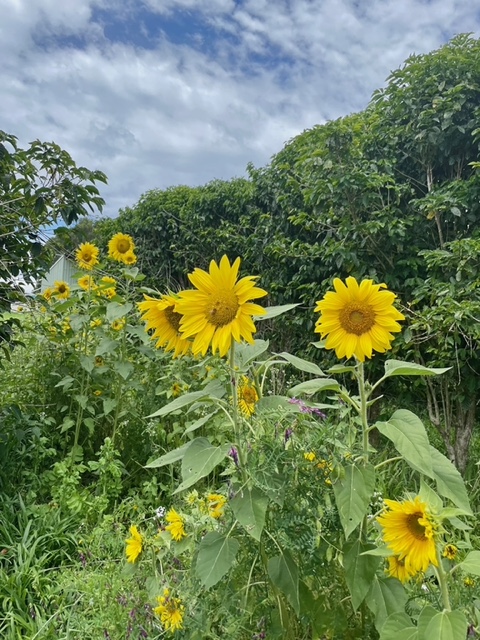
Covercrops for soil health and pollinators. How good is that! The covercrops become a natural insectary with native and honey bees, hoverflies, dragonflies and my favourite, lady bugs/ lady beetles all spotted en mass along with aphids and the occasional small spider and joy of joys – butterflies! Flapping by, having a good munch, gathering nectar and pollen and eating others as some do.
A force of nature and all a food source for wildlife higher up the food chain who also call our farm home.
The birds swung on in to check out the smorgasbord of insects and seed stock, as we’ve allow the covercrops to live their full life through till dried seed pod stage. Some of the self seeders will pop up again through the seasons to come, joining the next round of fresh seed planted. Why buy all new seed stock if we can get some germinating for free?
Radish and buckwheat, chicory and woolly vetch are fine self seeders. I think most of the sunflowers get taken by the cockatoos who arrive in time for the feast.
After 4 months, the plants were looking pretty scrappy, at end of life. Nige was finally allowed to mulch the cover crops in, then mowed again hard, to prepare for the next round of plantings with our GreenPro seeder.
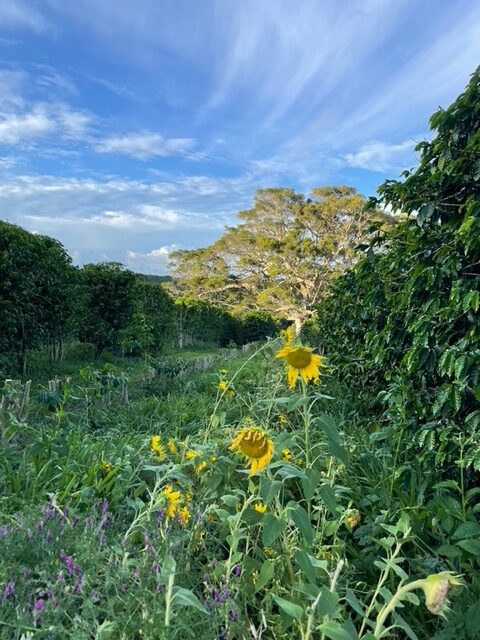
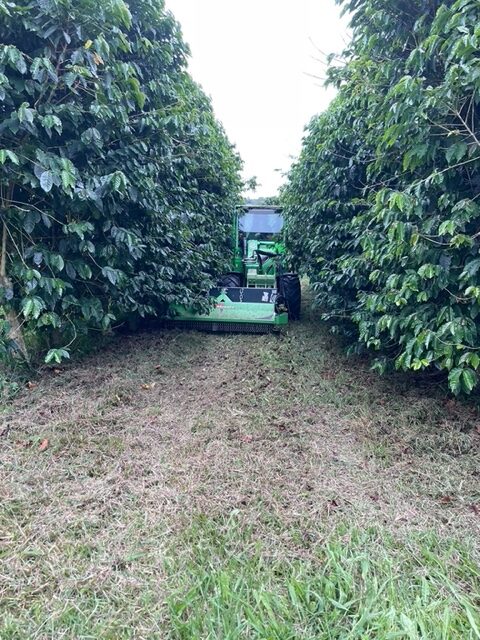
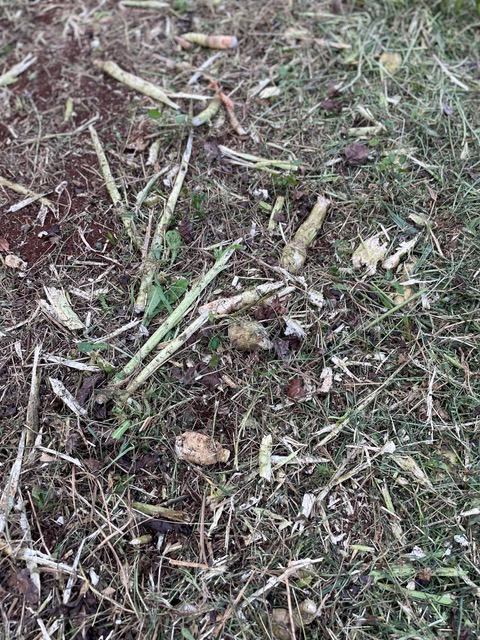
With rain due, the plants were ’terminated’ keeping the residue of radish roots and mulched biomass to lie on the soil or flicked to the side to feed the coffee trees. Good free mulch!
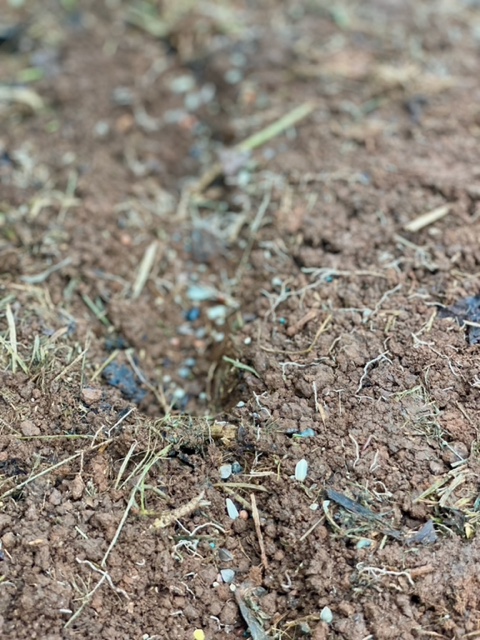
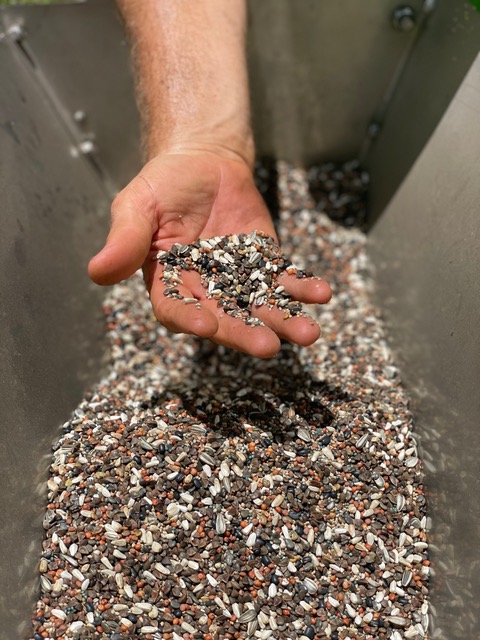
Fresh seed planted that afternoon and the next day, 1st feb 2023. Old crop out, fresh crop straight back in, minimising the time the soil is left open to the elements. No drying out. No erosion. Get that earth covered quick smart.
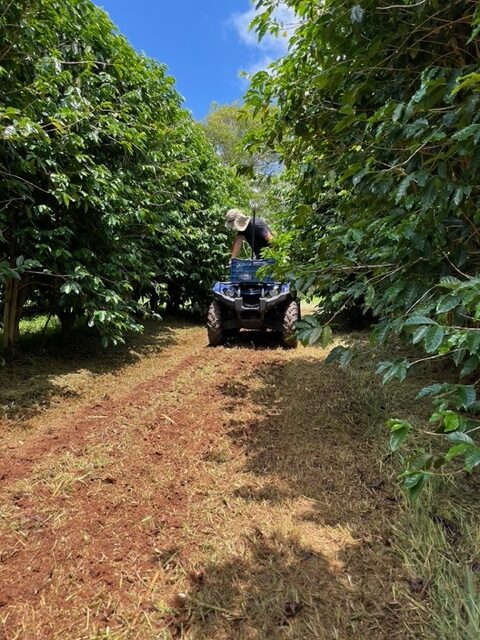
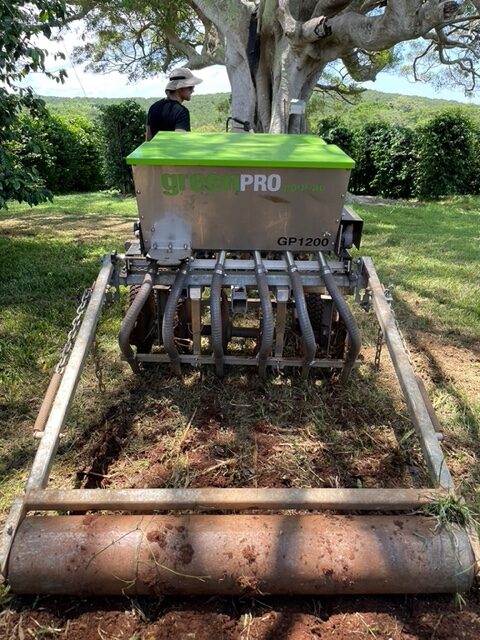
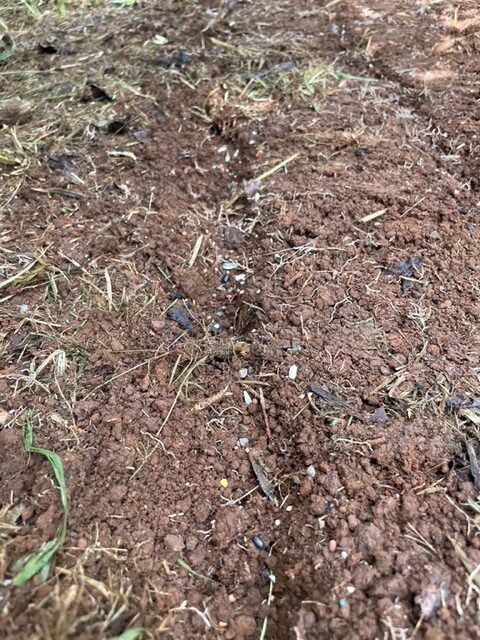
Our GreenPro seeder with disks form channels into the soil, whilst the 6 flexible hoses directly drop the seeds from the container above. Gentle, direct seeding, minimising soil disturbance. The heavy roller helps press the soil down over the seed. The seeder is pretty small, fitting in our 4m wide coffee rows, pulled along by the quad bike.
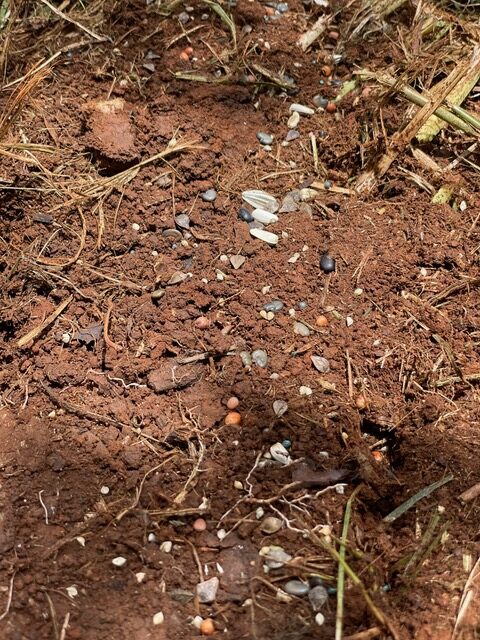
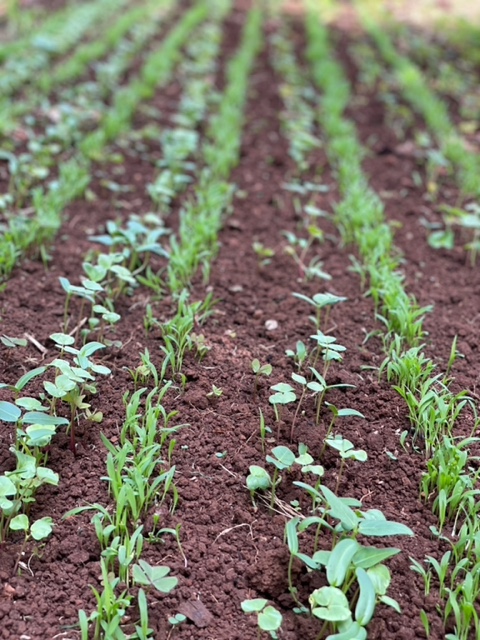
Look at the colour of our soil! Surely a measure of life in itself! Actually we did get our soil tested across the farm in December. We were very pleased. There IS good biological life down there. 🌱🐛🪱🌾.
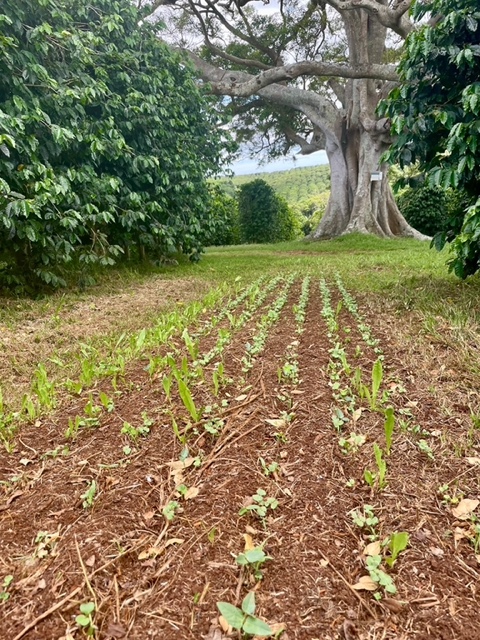
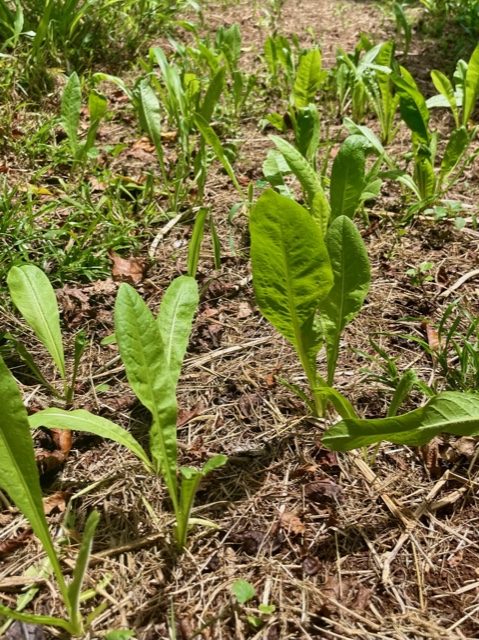
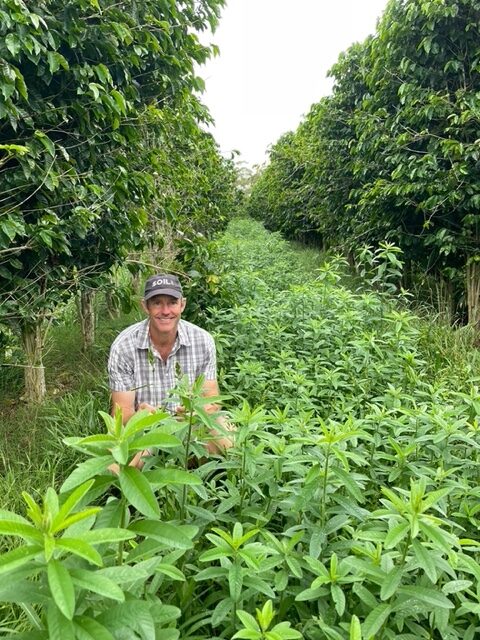
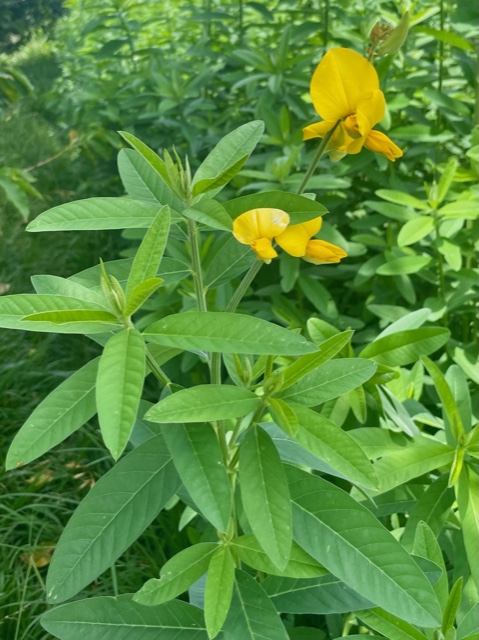
I’ve included photos of a few rows that were planted further along our farm in November. Full of life, a solid ground cover now 1-2 feet high of sunn hemp, radish, millet and with clover underneath. For more pics from the spring plantings see this springtime cover crop blog. We are staggering our planting times, so the flowering and insectary habitats are nutured throughout the year. Keep those bees and friends pollinating all year round. 🐝 🦋🐞
Working with the SCU Centre for Organics Research and Regenerative Ag Alliance, researchers are monitoring and measuring the biological benefits in select rows over the last 3 years. Soil biology, nitrogen and carbon drawdown, biomass, insect numbers and diversity all noted every season. We are well pleased, as are the researchers, with the evident soil life benefits of planting suitable cover crops for subtropical horticulture. More plantings, more biodiversity above and below the soil. To read more of our biological farming efforts read this intro. We shall Carry on Cover Cropping – the benefits are lasting and build every year. Who says we can’t ‘grow soil’! The benefits of Covercrops for soil health and pollinators, creating a diverse wildlife habitat and food source for small creatures and pollinators, makes it all the more worthwhile.


